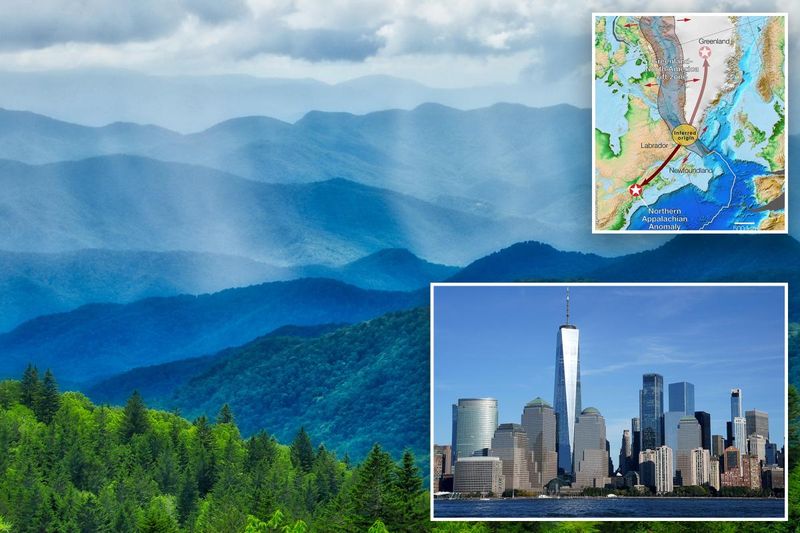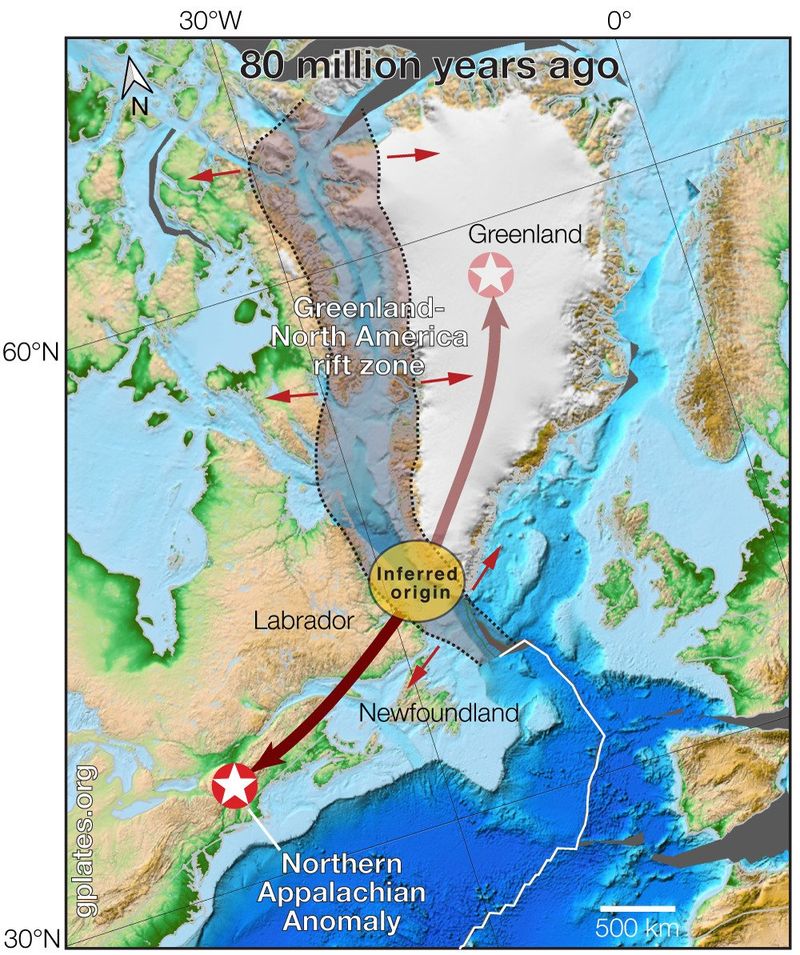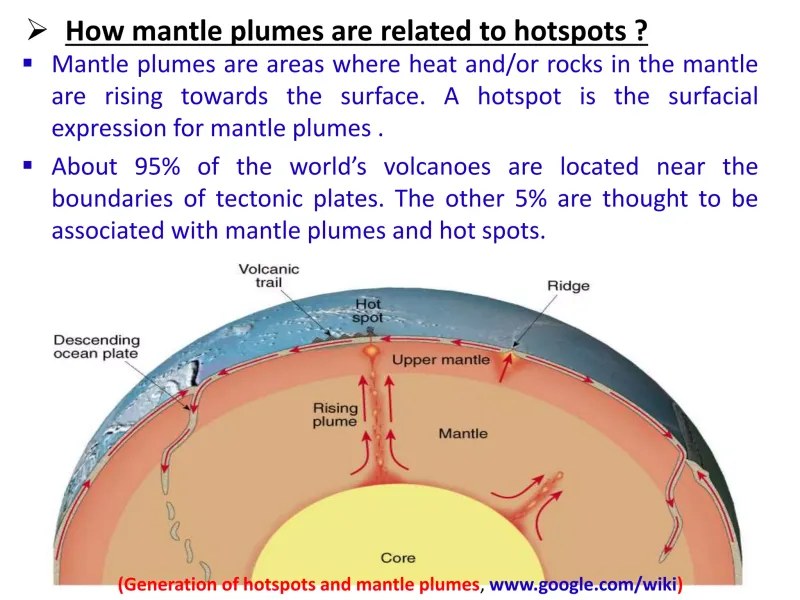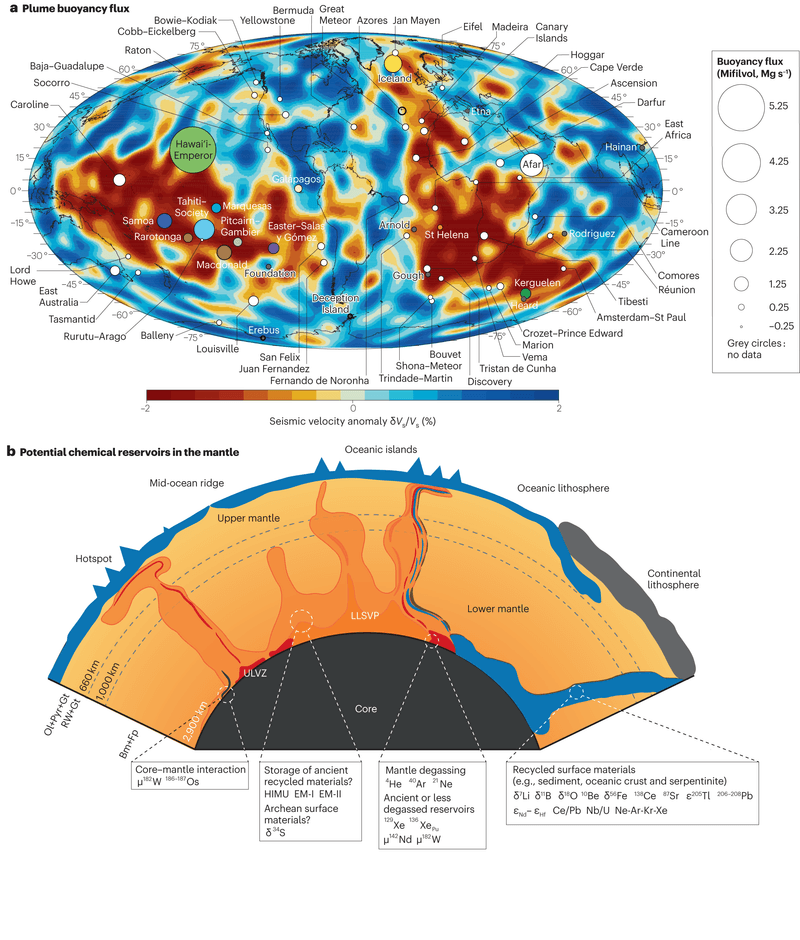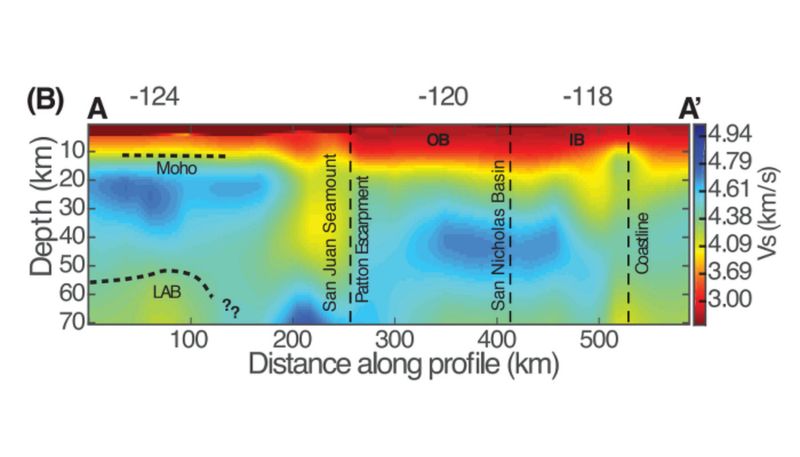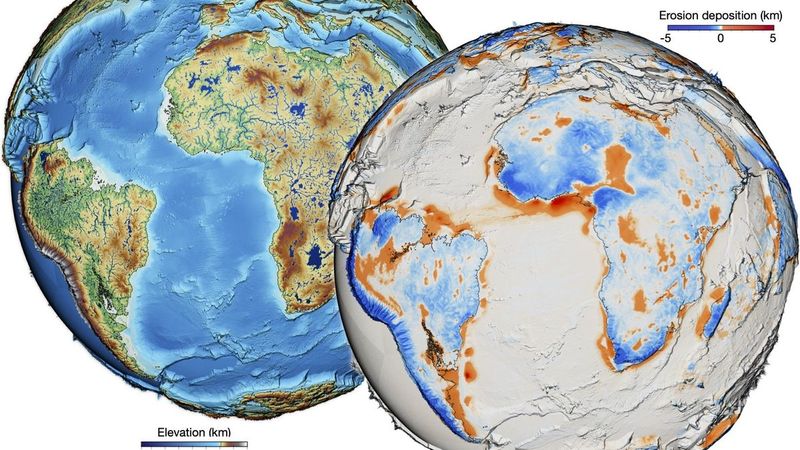Deep beneath the ancient Appalachian Mountains, something unusual is happening. Scientists have discovered a massive blob of super-hot rock slowly creeping through Earth’s mantle, and it’s heading toward New York. This strange geological feature, called the Northern Appalachian Anomaly, sits about 125 miles underground and could reshape our understanding of how continents change over millions of years.
A Deep Anomaly Under New England
Geologists have pinpointed something extraordinary lurking far below the surface. About 125 miles beneath the Appalachian range lies a colossal zone of unusually hot rock spanning roughly 220 miles across New England. Scientists call it the Northern Appalachian Anomaly, or NAA for short.
What makes this discovery remarkable is its location. Most mantle hotspots bubble up near active plate boundaries where continents collide or split apart. Yet this thermal upwelling sits beneath one of the most geologically quiet regions in North America, far from any tectonic action.
The NAA challenges long-held beliefs about stable continental interiors. It proves that even in seemingly dormant zones, Earth’s deep interior remains restless and dynamic, capable of influencing the landscape above in surprising ways.
Revising Its Origin: Greenland Rift, Not Africa
For years, scientists believed this hot blob was a leftover remnant from when North America tore away from Africa roughly 180 million years ago. New evidence tells a different story entirely. Advanced seismic imaging and computer modeling now point to a more recent event: the rifting between Greenland and North America.
Around 80 million years ago, these two landmasses began splitting apart near the Labrador Sea. This violent separation likely triggered the formation of the NAA in the mantle below. Over tens of millions of years, the thermal anomaly gradually drifted inland from its birthplace.
This revised timeline changes how geologists understand ancient continental breakups. The discovery shows that tectonic rifting can create long-lasting thermal scars that migrate far from their original zones, influencing geology millions of years later.
Slow Movement: Mantle Waves in Motion
Imagine a river of molten rock flowing in super slow motion beneath your feet. The NAA isn’t sitting still—it’s creeping southwestward at about 12 miles per million years. That might sound incredibly slow, but on geological timescales, it’s significant movement.
Computer simulations predict that if this pace continues, the hot blob will drift beneath the New York area in roughly 10 to 15 million years. Scientists describe this phenomenon as a “mantle wave,” where buoyant, heated material peels away from its source and glides across the continental interior.
This motion reflects broader geodynamic processes happening deep within Earth. Hot rock behaves almost like thick honey, flowing gradually under immense pressure and temperature. Understanding these mantle waves helps scientists predict how continents will evolve far into the future.
Heat as Uplift: Why Appalachians Persist
Here’s a geological mystery that puzzled scientists for decades: Why do the Appalachians still stand tall after hundreds of millions of years of erosion? The answer might lie in the heat radiating from the NAA below. Thermal upwelling from this hot blob weakens and thins the dense lithospheric root beneath the mountains.
Think of it like removing weight from a hot air balloon—the lighter it gets, the higher it floats. As the NAA heats the rock above, it reduces density and increases buoyancy. This process counteracts the relentless downward pull of erosion, helping maintain the mountains’ elevation.
Without active tectonic collisions pushing them upward, the Appalachians should have worn down to gentle hills by now. Instead, this deep thermal support acts as an invisible hand, keeping these ancient peaks standing proud against time.
Implications for Tectonics and Interior Dynamics
The NAA forces scientists to rethink what “tectonically stable” really means. For generations, geologists assumed that continental interiors far from plate boundaries were essentially dead zones—unchanging and boring. This discovery proves otherwise. Deep mantle processes remain surprisingly active even beneath the quietest regions, silently shaping the surface above.
The concept of mantle waves suggests that continental breakups create thermal ghosts that wander for millions of years. These anomalies can drift thousands of miles from their birthplace, influencing geology in unexpected places. Similar hidden hotspots might exist beneath other continents, waiting to be discovered.
This research fundamentally changes how scientists model lithospheric dynamics. It means that understanding Earth’s surface requires looking deep into the mantle, where invisible forces work on timescales almost too vast to comprehend.
What’s Next: Observations, Models and Time
While the NAA poses no immediate danger to anyone, it demands serious scientific attention. Researchers are deploying advanced seismic tomography to create detailed three-dimensional maps of the anomaly’s structure. Heat flow measurements from deep boreholes will help verify temperature estimates and track changes over time.
Scientists plan to investigate how this thermal giant influences crustal stress patterns and uplift rates across the region. They’re also searching for potential connections to past volcanic or magmatic episodes that might have left clues in the geological record.
Because the anomaly moves at a glacial pace—literally taking millions of years to travel meaningful distances—the real challenge lies in prediction. Geodynamic models must accurately forecast its future behavior and match up with evidence scattered across North America’s ancient rocks.
The Long View: Millions of Years Ahead
It’s hard to wrap your mind around timescales measured in millions of years. By the time the NAA reaches New York, humans will likely have evolved into something completely different—or possibly won’t exist at all. Yet understanding these ultra-slow processes matters deeply for comprehending how our planet works.
As the hot blob continues its journey southwestward, the Appalachians may gradually lose their thermal support. Without that buoyancy boost, the mountains could finally succumb to erosion and settle lower. Meanwhile, regions ahead of the anomaly might experience unexpected uplift as the heat arrives beneath them.
This research reminds us that Earth operates on timescales far beyond human experience. Mountains rise and fall, continents drift, and hidden rivers of molten rock flow beneath our feet—all while we go about our daily lives, mostly unaware of the incredible forces shaping the ground we stand on.

